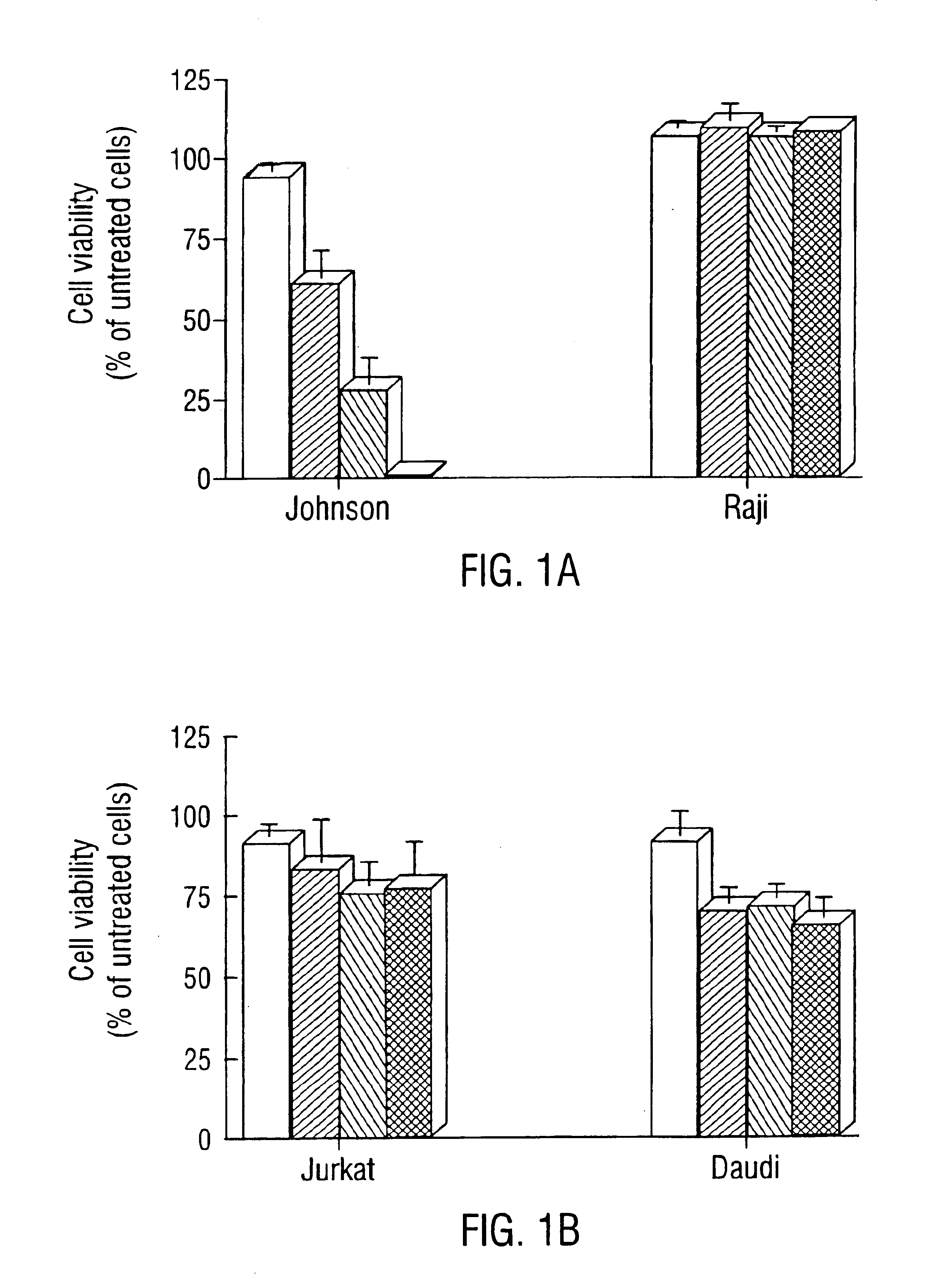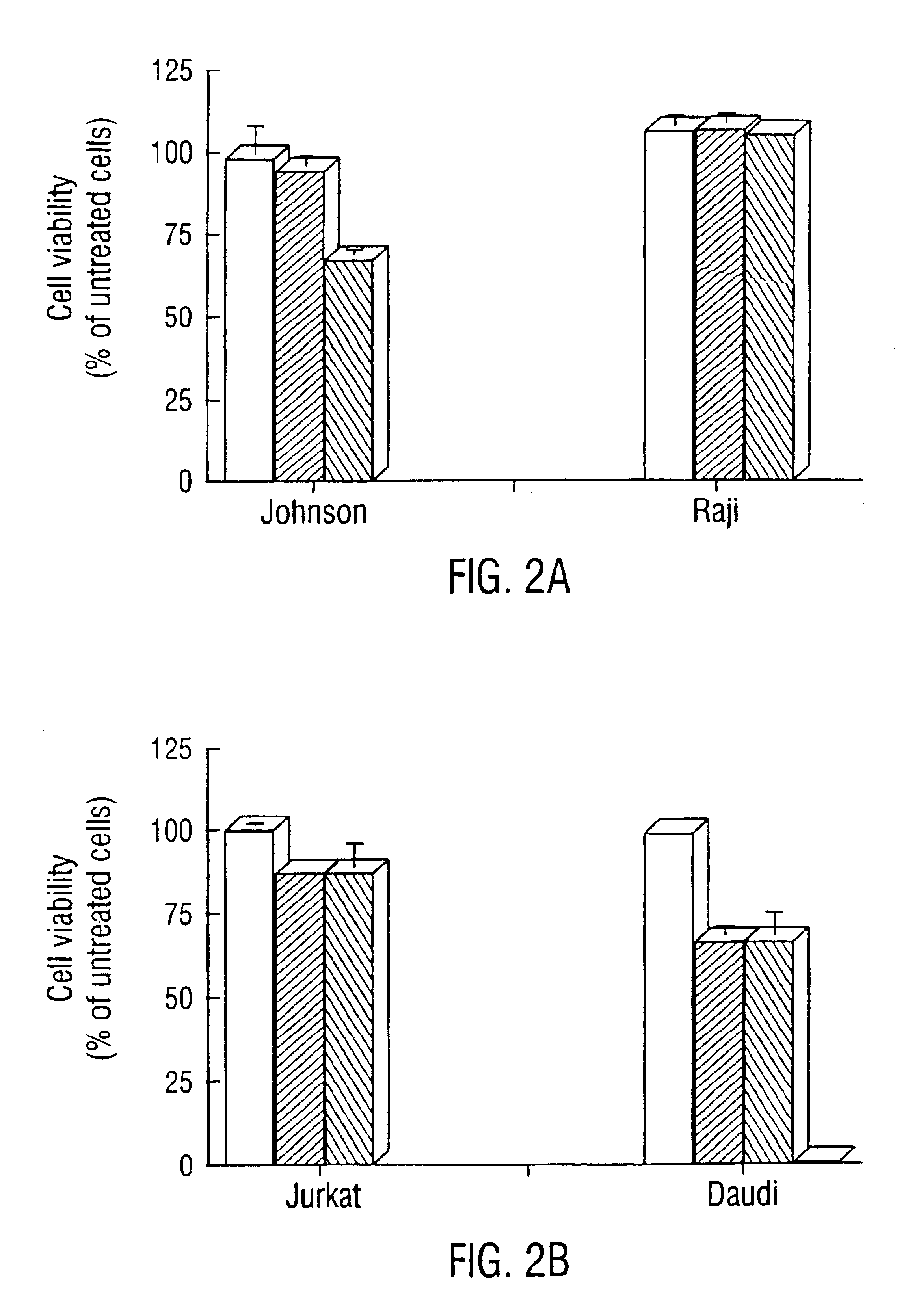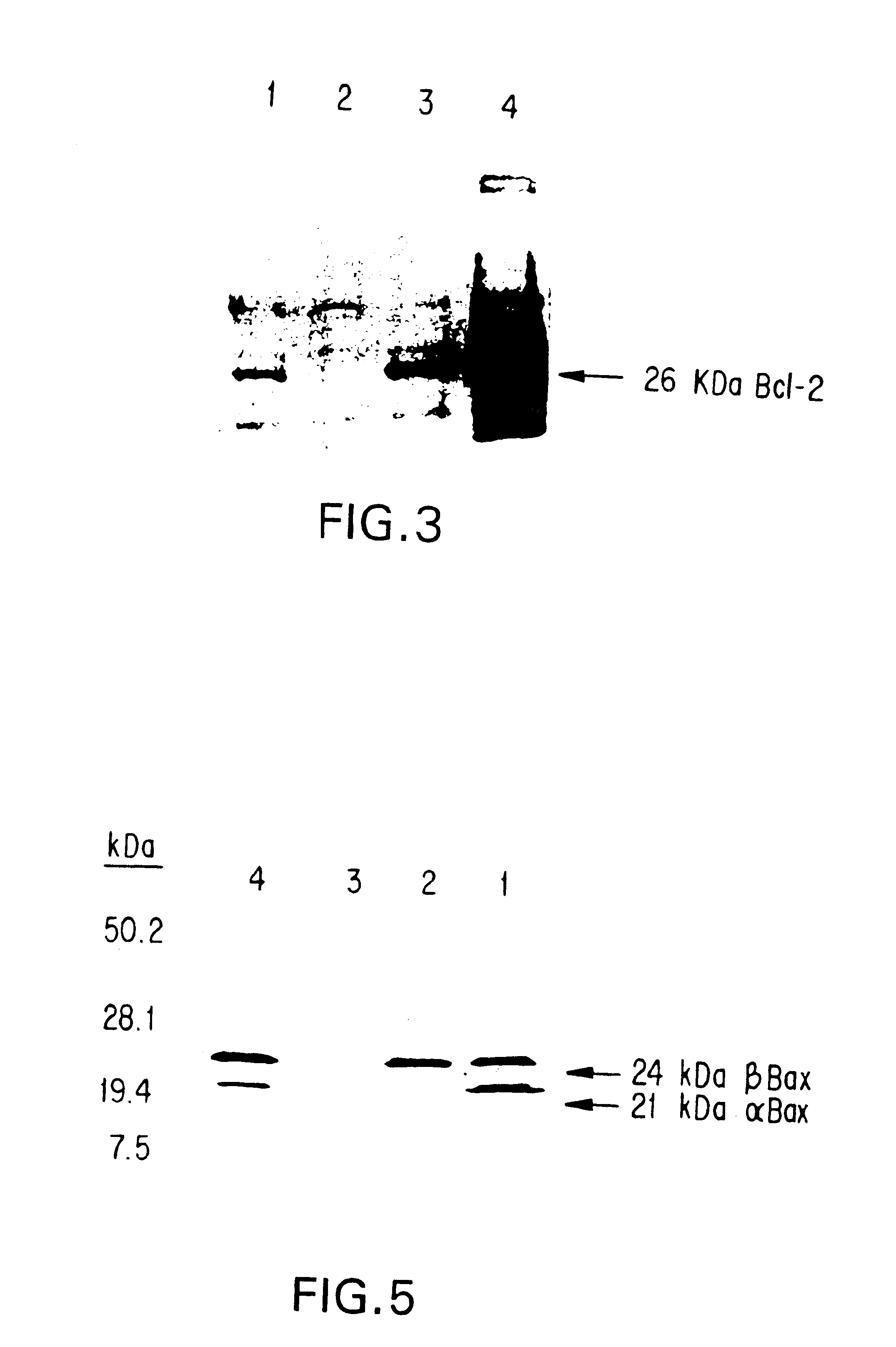Inhibition of Bcl-2 protein expression by liposomal antisense oligodeoxynucleotides
a technology of liposomal antisense and bcl-2, which is applied in the field of cancer therapy, can solve the problems of forming aggregates which are not uniform in size or shap
- Summary
- Abstract
- Description
- Claims
- Application Information
AI Technical Summary
Benefits of technology
Problems solved by technology
Method used
Image
Examples
example 1
Synthesis of Oligonucleotides
[0103]Nuclease-resistant p-ethoxy oligonucleotides, non-ionic phosphodiester analogs, were purchased from Oligo Therapeutics (Willsonville, Oreg.). An oligonucleotide specific for the translation initiation site of human Bcl-2 mRNA: 5′ CAGCGTGCGCCATCCTTC3′ (SEQ ID NO:1) was used as antisense oligonucleotide. Two different control oligonucleotides were used: 5′ ACGGTCCGCCACTCCTTCCC3′ (SEQ ID NO:2) (scrambled version of Bcl-2 antisense oligonucleotide) and the random sequence 5′ CTGAAGGGCTTCTTCC3′ (SEQ ID NO:3).
example 2
Preparation of Liposomal Oligonucleotides (L-OS)
[0104]P-ethoxy-oligonucleotides dissolved in distilled water were added to phospholipids (Avanti Polar Lipids, Alabaster, Ala.) in the presence of excess tert-butanol. The mixture was frozen in a dry ice / acetone bath, lyophilized overnight and finally hydrated with HEPES buffered saline (1 mmol / L Hepes and 10 mmol / L NaCl) at a final oligonucleotide concentration of 0.1 mmol / L. Liposomal oligonucleotides (L-OS) were sonicated for 12 minutes in a bath-type sonicator. The average diameter of the particles was 100 nm±50 nm as determined in a NICOMP particle sizing system (Santa Barbara, Calif.).
example 3
Oligonucleotide Inhibition of Protein Expression
[0105]Cell Lines
[0106]Johnson cells, a human transformed FL cell line bearing the t(14;18) translocation which overexpresses Bcl-2 protein, were used. Raji and Jurkat cells, a human Burkitt lymphoma cell line and a human acute T cell leukemia cell line, respectively, were also used. Both lines express the Bcl-2 protein but they lack the t(14;18) translocation. Daudi cells, a human Burkitt lymphoma cell line which does not express the Bcl-2 protein, was used as a negative control cell line. Johnson, Raji and Jurkat cells were grown in RPMI 1640 media (GIBCO, Grand Island, N.Y.) supplemented with 10% heat-inactivated fetal bovine serum (FBS). Daudi cells were grown in RPMI 1640 media supplemented with 20% heat-inactivated FBS.
[0107]Delivery of L-OS to Cells
[0108]Ten thousand cells / well were seeded in a 96-well plate in 0.1 mL of the respective medium. Cells were incubated with L-OS at final concentration of 2 to 8 μmol / L at 37° C. in a 5...
PUM
| Property | Measurement | Unit |
|---|---|---|
| concentration | aaaaa | aaaaa |
| diameter | aaaaa | aaaaa |
| diameter | aaaaa | aaaaa |
Abstract
Description
Claims
Application Information
 Login to View More
Login to View More - R&D
- Intellectual Property
- Life Sciences
- Materials
- Tech Scout
- Unparalleled Data Quality
- Higher Quality Content
- 60% Fewer Hallucinations
Browse by: Latest US Patents, China's latest patents, Technical Efficacy Thesaurus, Application Domain, Technology Topic, Popular Technical Reports.
© 2025 PatSnap. All rights reserved.Legal|Privacy policy|Modern Slavery Act Transparency Statement|Sitemap|About US| Contact US: help@patsnap.com



